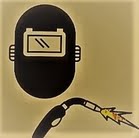In pressure vessel fabrication, heat treatment plays a critical role in ensuring material strength, toughness, and overall reliability. When dealing with dish heads and shell plates, engineers often encounter the requirement of Simulation Heat Treatment (SHT) on test coupons to verify compliance with ASME Section VIII Division 1 and Division 2. Understanding how and when these treatments and tests are required is essential for meeting code compliance and ensuring safety.
This article provides a structured explanation of simulation test coupon requirements and the interpretation of Material Test Coupons (MTC) for normalized dish heads as per ASME Section VIII.
1. Dish Head Plate Received Without SHT from Manufacturer
When a dish head plate is received without prior simulation heat treatment (SHT), the fabricator must perform SHT on a test coupon before using the plate for fabrication.
Required Heat Treatment:
- As per ASME Sec. VIII Div. 1, UCS-85(c) and ASME Sec. VIII Div. 2, 3-10.2, the test coupon (100 mm × 300 mm × thickness) must undergo the same heat treatment as the actual dish head component.
- Since the dish head will be Normalized + Stress Relieved (SR), the test coupon must also be Normalized + SR to simulate the actual heat treatment conditions.
Required Tests After Heat Treatment:
- Tensile Test
- Impact Test (mandatory if impact testing is specified)
- Hardness Test (if required by project specifications or material specification)
- Chemical Analysis (if not already available from the MTC)
2. Shell Plate – Simulation Test Coupon with SR Only
For shell plates, simulation requirements differ depending on material group and service conditions.
Required Heat Treatment:
- As per UCS-85(f), Div. 1, if the Stress Relief (SR) temperature is below the Low Transformation Temperature (LTT), no simulation heat treatment is required for P-No. 1 materials.
- However, since impact testing is usually required, and SR may affect toughness, the test coupon must be subjected to SR to simulate the actual condition of the shell plate.
Required Tests After Heat Treatment:
- Impact Test
- Tensile Test
- Hardness Test (if applicable)
3. Dish Head – MTC Showing Normalizing + SR
A common query arises:
Is Stress Relieving (SR) mandatory again if the dish head is already normalized and stress relieved as per the MTC?
Explanation:
- If the dish head has already undergone Normalizing + SR, and the test coupon has also received the same treatment, no additional SR is required.
- As per UCS-85(f), additional SR is not mandatory unless the fabrication process introduces new stresses (e.g., excessive forming, welding, or repair activities).
- Clause UCS-85(f) also provides exemption for P-No. 1 materials when heat treatment is performed below the LTT.
Conclusion:
If the MTC confirms Normalizing + SR and there is no further forming or heavy welding that introduces stresses, no additional SR is required.
Key Takeaways
- Test coupons must always replicate the heat treatment of the actual component.
- For dish heads without prior SHT, the coupon must undergo the same Normalizing + SR treatment.
- For shell plates, SR must be simulated on the coupon if impact testing is required.
- If MTC confirms Normalizing + SR and no additional stresses are introduced, further SR is not required.
By carefully interpreting ASME Section VIII Division 1 & 2 clauses, engineers can avoid unnecessary heat treatments while ensuring full compliance and safety of the pressure vessel components.
